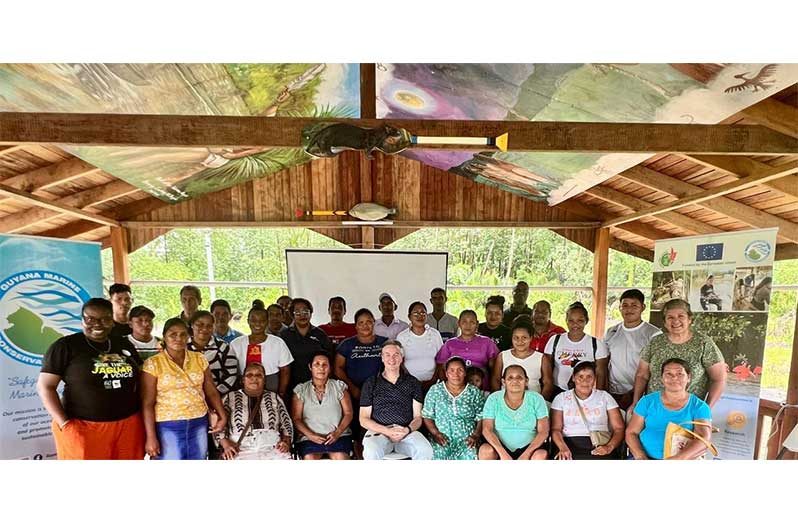AMBASSADOR of the European Union (EU) to Guyana, René van Nes, visited Region One to mark the successful completion of the first year of the EU-funded project, “Developing the Capacity of the Barima-Mora Passage Communities in Natural Resources Governance.”
According to a press release, the three-day visit, which ran from June 5–7, included field tours of community-led initiatives and key ecological sites, reflecting the EU’s continued support for locally driven conservation efforts in Guyana.
During the visit, Ambassador Van Nes toured the Shell Beach Protected Area, the Smith Creek Wiri-Wiri Pepper Factory, the Morawhanna shade house site, and the proposed mangrove restoration site in Aruka Mouth.
The itinerary also included meetings with the Regional Democratic Council and the Blue Flame Women’s Group, highlighting the EU’s support for multi-stakeholder and gender-inclusive projects.
A key highlight of the visit was the Mangrove Conservation Dialogue held at the Imbotero Research Centre on June 6, under the theme “Planning Together for the Conservation of Mangroves in the BMP Communities.”
The event brought together community members, local leaders, conservation partners, and EU representatives to reflect on year one achievements, and to plan future strategies for mangrove conservation in the Barima-Mora Passage (BMP).
Community members passionately shared their experiences and delivered inspiring presentations on how they benefited from experiential exchanges to various parts of Guyana, including Iwokrama, North and South Rupununi, and Warapoka Village, which enhanced their understanding of conservation, natural resource governance, leadership, and sustainable eco-tourism enterprises.
Youth participants also spoke about how they are applying their drone training to monitor environmental changes and support local conservation efforts.
Additionally, they highlighted the establishment of community-led beekeeping enterprises, another key success funded under year one of the EU-supported project.
The project, implemented by the Guyana Marine Conservation Society (GMCS) with support from Conservation International-Guyana (CI-Guyana), has made significant strides in building community capacity through experiential exchanges, the formation of Village Mangrove Action Committees (VMACs), and the launch of green enterprises such as bee-keeping.
The EU Ambassador’s visit reaffirmed the strong partnership between Guyana and the European Union in supporting biodiversity conservation, climate resilience, and sustainable livelihoods for Indigenous and coastal communities.


.jpg)











